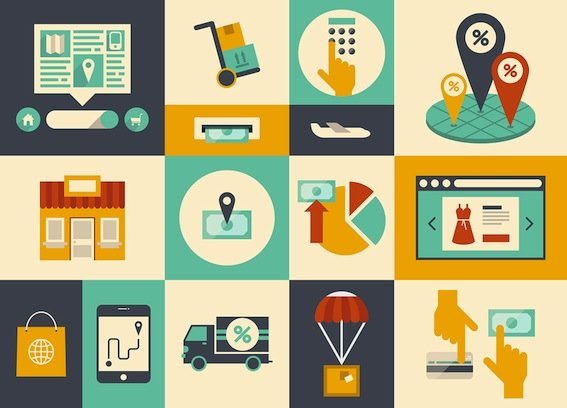thoughts
Further Dissecting Lifetime Value: Purchase Frequency and AOV
October 22, 2013

Welcome to week 4 of our “Leveraging Retention to Optimize Customer Acquisition” series. Thus far we have explored 1) why retention mechanics matter for acquisition, 2) how to forecast the “true” cost of customer acquisition and 3) effective tactics for converting more browsers into buyers to reduce customer acquisition costs.
Now that we’ve identified some strategies for increasing the total universe of buyers, we shift our focus to improving the overall value of each of those customer relationships (lifetime value, also called CLV or LTV), namely by pushing customers to purchase more frequently and getting them to spend more money each time they buy (a metric known as average order value, or AOV).
As a quick recap, improving CLV is important for customer acquisition for two reasons: 1) the wider the gap between lifetime value and acquisition cost, the more money the company takes home and 2) a stronger CLV number gives the acquisition team more cushion around how much can be invested to acquire new customers.
It should go without saying that personalization is hands-down the easiest way to improve both purchase frequency as well as average basket size. Personalized experiences mean better user experiences, which have several benefits:
-
• Stronger email opens and clickthroughs – meaning more visitors hit your site (or app) each day (and more often than not, also visit more frequently)
-
• Better customer “stickiness” – because personalization improves the overall user experience, customers are more likely to return to your site/app on their own
-
• Increased purchase conversions – more pertinent product recommendations increase the likelihood that the user actually completes a purchase
-
• Higher AOV – on average, our clients see a 5-10% lift in AOV when personalized recommendations are surfaced in marketing messages
That all said, there are plenty of levers beyond just personalization for improving both purchase frequency as well as AOV.
Improving Purchase Frequency
-
• Triggered Retention Emails: Timing is everything when it comes to retention. Rather than sending one-off win-backs (“we miss you”), trigger automated messages to deploy when the user is at risk of being lost for good. If you know users are unlikely to ever return if they go 60 days without buying, push a day60 trigger designed to mitigate the risk of disengagement. It will be substantially easier to recapture the user’s attention at day60 than at day600.
-
• Credit Reminders: If customers hold a credit balance on your site, you can craft high-impact campaigns along the lines of “Hurry, you have $150 in credits to use.” An even more effective strategy is to hint at the real value of those credits; for instance, if you sold books for ~$10 in each, you might say “Hurry, we have 15 free books waiting for you” (and then caveat as needed in the message).
-
• Loyalty Programs: Loyalty programs (a la Hotel.com’s “stay 10 nights and get a night for free”) are powerful for improving purchase frequency, most notably as the customer approaches the point of the reward; this particular study found purchase frequency increases by 20% when customers close to earning a reward (this assumes, of course, that you’re messaging the customer to remind them that the reward is in sight).
Increasing AOV
-
• Discount “Floors” / Minimums: Instead of just offering a blanket 20% off, think about introducing a floor to the offer (e.g. “20% off purchases of $150 or more”); campaign AOVs for floored promotions usually settle right around the floor threshold (here, $150). Some of our clients also use tiered floors (e.g. “20% off purchases of $150 or more, 25% off purchases of $250 or more, etc.), which often prove even more effective. Be sure to reinforce the promotion in the checkout page; in other words, if I have $200 of merchandise in my cart, surface a message like “Spend $50 more and get 25% off your entire purchase!”
-
“Free shipping on purchases of $X or more” is another popular promotion; this is an effective tactic, but we caution retailers about giving away free shipping too often unless it’s part of the core value prop. If you always give away free shipping, playing that card not only seems less special, it also precludes your ability to use it as a customer service tool (e.g. maybe you offer free shipping to customers who had negative experiences).
-
-
• Cross-Selling: Ever notice that box of products labeled something like “Other Products You Might Like?” This unit is trying to drive cross-sales, a very effective tactic for increasing AOV. To generate the best possible product suggestions (read: highest conversion propensity), be sure to leverage basket and affinity analysis, which look at historical data to determine which items are most likely to be purchased together (or even sequentially). Warning: when thinking about cross-sales, make sure you are driving truly incremental purchases vs. cannibalizing other conversions.
In our next and final post of this series, we’ll review effective strategies for reducing the risk of customer churn – in other words, now that we have made significant investments in improving customer lifetime value, how do we ensure that customers don’t stop buying?
The State of Brand Loyalty in the U.S. in 2023
Related



